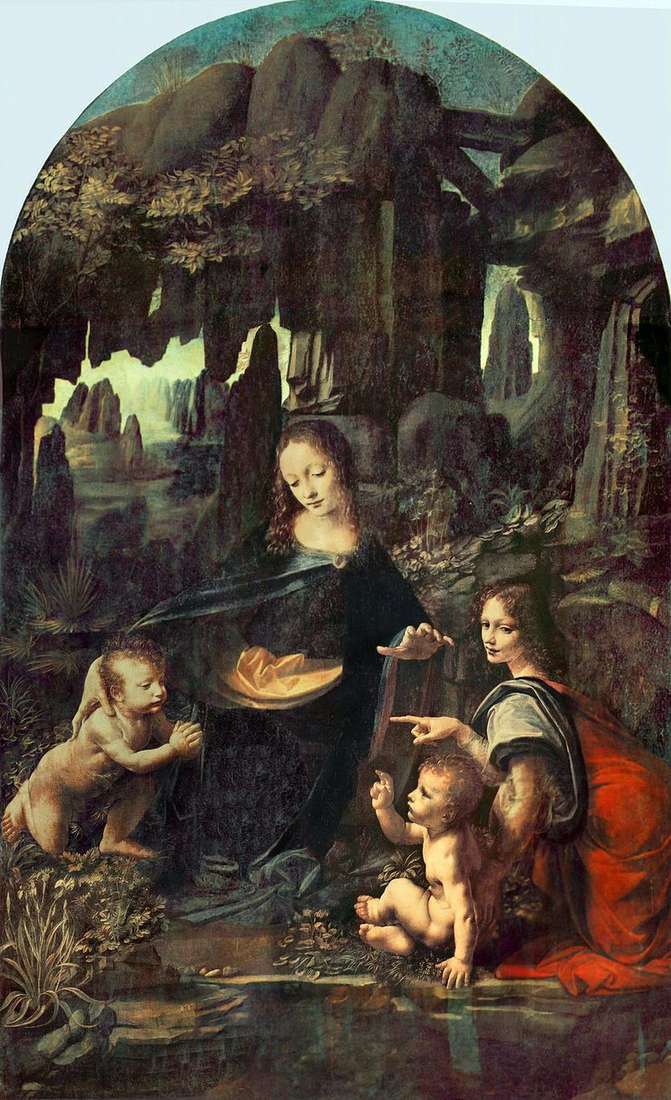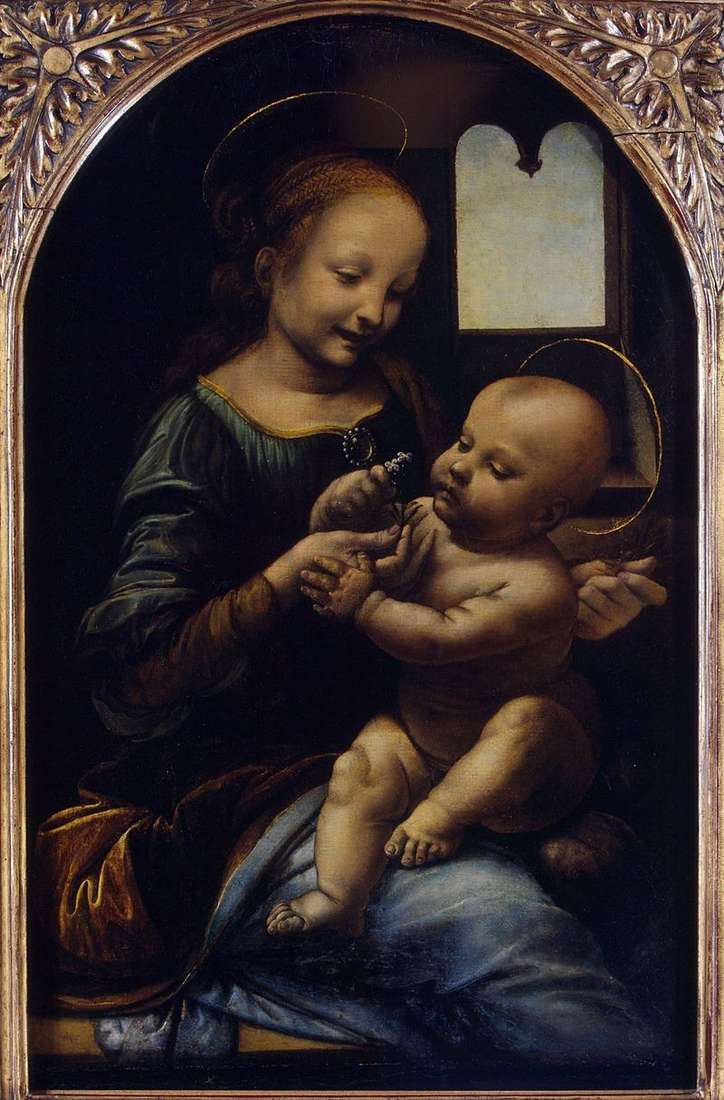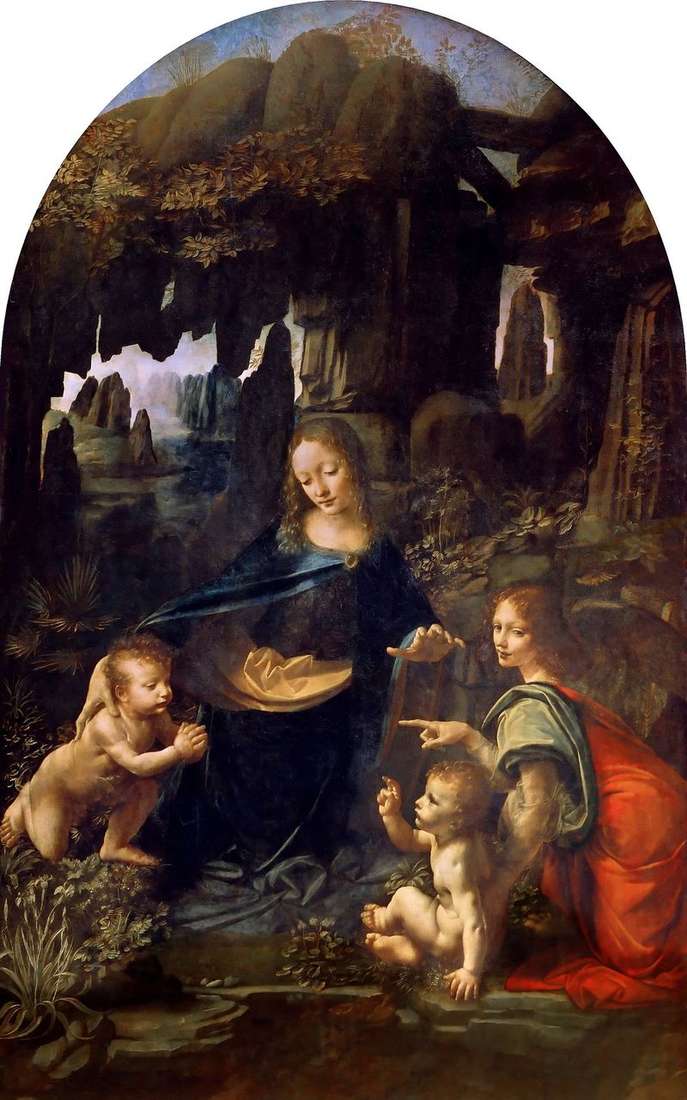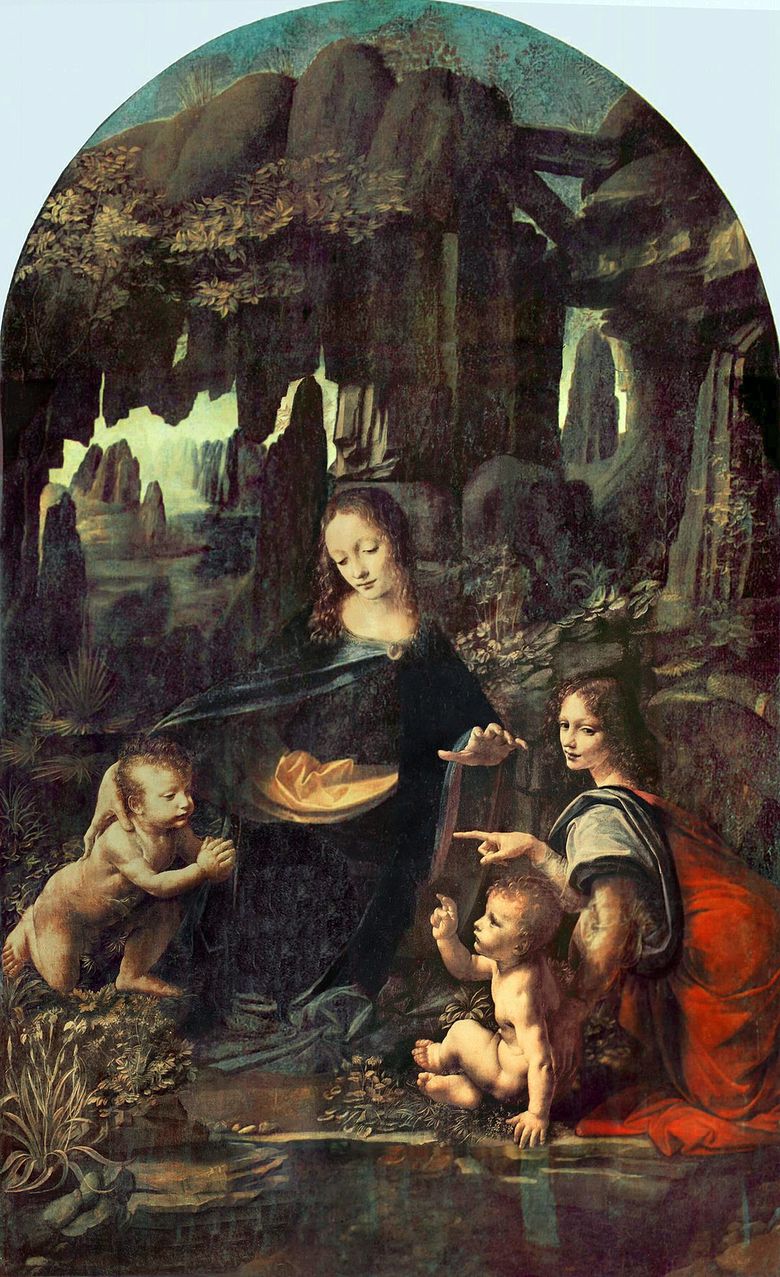
To the painting “Madonna in the rocks” Leonardo da Vinci started in 1483, having received an order for an altar picture from one of the religious brotherhoods. Discrepancies with customers due to payment led to the fact that Leonardo da Vinci left the picture at home, finally completing it between 1490 and 1494 years. The size of the painting is 198 x 123 cm, canvas, wood, oil. The painting “Madonna in the rocks” can be considered the first monumental altar composition of the High Renaissance. Unlike the “Adoration of the Magi” here, this task is solved by them fully armed mature craftsmanship. Florentine “Worship” abounded in a multitude of characters of the first and second plan.
In the Louvre painting, the artist depicted only four figures in the foreground – the Virgin Mary, the angel, the infant of Christ and the little John the Baptist. But these images acquired the features of generalized grandeur; in comparison with them, the characters of the early Leonard works seem less significant. The images of the “Madonna in the rocks” can be called ideally beautiful, but with that obligatory addition, that they retain at the same time the fullness of life expressiveness. First of all, this refers to the image of the Madonna herself, whose mother’s love is expressed not only in the gesture of her hand, as if blessing and protecting her child, but also in deep inner concentration, in the concentration of emotion, compared with which the image of the naive looks naive young mother in the picture “Madonna with a flower.”
Quattrocento knew two primary types of images in pictorial compositions – either static images of solemn anticipation, or a detailed narrative, a lively story. In Leonard’s painting “Madonna in the rocks” there is neither one nor the other. Actors are deprived of stiffness, they differ in complete freedom of physical and mental movements. There is no clearly expressed plot-narrative disclosure of the topic; instead of clearly fixing a certain moment, Leonardo found in the Louvre painting one of the most important pictorial principles of the High Renaissance, which can be defined as the embodiment of the human image in a state of harmonic being, a special balance of internal and external movements. This is not a separate moment, it is a peculiar, “lasting” state, free, however,
The surrounding of the actors is also represented in a new way – the semblance of a grotto among the bizarre rocks, resembling giant dark crystals in shape, the soil dotted with various colors. Every stone, every blade of grass and a flower is a subtle image of nature, a testament to Leonardo da Vinci’s vast knowledge of geology and botany, but in general they form a landscape of almost a fantastic nature. This is not a background, but a kind of emotional environment that comes into active communication with human images – it’s not for nothing that the figures are depicted not in front of the landscape, as it used to be, but in the landscape itself. The traditional quattrocentent dissociation of the first plan and the background was thereby finally overcome.
To match the generalized character of the images, the “big” vision of nature and the very compositional thinking of Leonardo da Vinci. His early “Adoration of the Magi” compared with the picture “Madonna in the rocks” would seem simply chaotic. In the Louvre painting, the ability to locate figures according to a clear and clear geometric construction was clearly manifested: they seem to be inscribed in an isosceles triangle, the vertex of which coincides with Maria’s head. So Leonardo da Vinci puts the beginning of the pyramidal composition, extremely widespread in the painting of the High Renaissance, which contributes to the creation of clear and harmonic solutions.
In the Louvre painting, the figures feel themselves within the boundaries of this construction freely and naturally, especially since Leonardo da Vinci avoids dry geometrism by adding additional shades to the composition. So, weighting the lower right corner of the picture with two figures – the angel and baby of Christ – the artist balances it with the help of a large lumen in the upper left part, due to which the calm statics of the pyramidal composition is enriched by the movement along the diagonal. Such techniques of complex dynamic equilibrium will become characteristic of the masters of the High Renaissance.
 Madonna with a flower (Madonna Benoit) by Leonardo da Vinci
Madonna with a flower (Madonna Benoit) by Leonardo da Vinci The Virgin Mary in the grotto by Leonardo da Vinci
The Virgin Mary in the grotto by Leonardo da Vinci Madonna Litta by Leonardo Da Vinci
Madonna Litta by Leonardo Da Vinci Madonna with spinning wheel by Leonardo Da Vinci
Madonna with spinning wheel by Leonardo Da Vinci Madonna with the Child and Saint Anna by Leonardo da Vinci
Madonna with the Child and Saint Anna by Leonardo da Vinci Madonna with a carnation by Leonardo Da Vinci
Madonna with a carnation by Leonardo Da Vinci Self Portrait by Leonardo Da Vinci
Self Portrait by Leonardo Da Vinci Madonna dans les rochers (Madonna dans la grotte) – Leonardo Da Vinci
Madonna dans les rochers (Madonna dans la grotte) – Leonardo Da Vinci